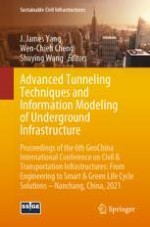2021 | Buch
Advanced Tunneling Techniques and Information Modeling of Underground Infrastructure
Proceedings of the 6th GeoChina International Conference on Civil & Transportation Infrastructures: From Engineering to Smart & Green Life Cycle Solutions -- Nanchang, China, 2021
herausgegeben von: Prof. Dr. J. James Yang, Prof. Dr. Wen-Chieh Cheng, Prof. Dr. Shuying Wang
Verlag: Springer International Publishing
Buchreihe : Sustainable Civil Infrastructures
